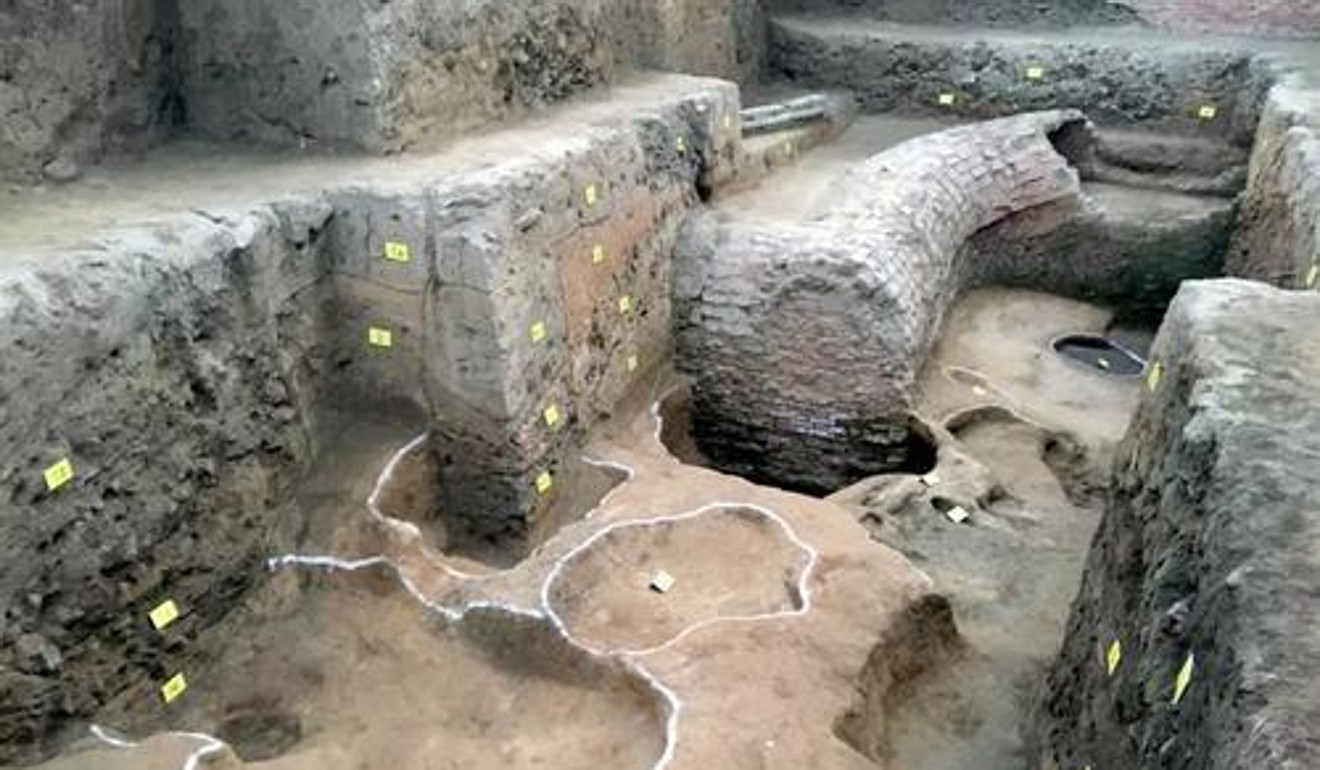
Ruins of 2,000-year-old coin workshop found in central China’s Henan province
- Archaeologists discover fragments of ceramic moulds, copper coins and a kiln site where an ancient government office once stood
Archaeologists have unearthed the ruins of a mint that is believed to have been used to produce coins 2,000 years ago in central China.
The workshop was discovered at the site of an ancient government office in Nanyang, Henan province, local newspaper Dahe Daily reported.
“The ruins were uncovered by pouring rain,” He Yujian, head of the Nanyang cultural relics bureau, told Xinhua.
China’s beastly bronze designs found in stone carvings at prehistoric settlement
Archaeologists first uncovered fragments of ceramic coin moulds at the site when they were carrying out repairs after heavy rain in late 2017, according to media reports.

A joint team from the local and provincial cultural relics and archaeology institutes later found nine areas of relics and one kiln site with eight ash pits.
They also found copper coins, copper smelting slag, pottery shards, animal bones and a large number of coin mould fragments.
Yang Jun, a research fellow with the China Numismatic Society, told Xinhua that two inscriptions on the moulds suggested they were used during the reign of Wang Mang, a Han dynasty official who briefly took power from 9-23AD. Wang launched a currency reform after seizing the throne.
Beijing’s Old Summer Palace: computer modelling brings back to life imperial garden destroyed by British and French troops
The Nanyang workshop produced coin moulds and two kinds of coins, and its discovery could prove valuable in the study of coin-making and the economic system during that period, Bai Yunxiang, a researcher with the Chinese Academy of Social Sciences, told Xinhua.
Yang also told Dahe Daily that the discovery could fill in some blanks in Chinese coin history.
At present only 75 square metres have been excavated. Experts believe the site of the ruins could cover more than 100,000 square metres, and that the excavation area should be expanded, Xinhua reported.

